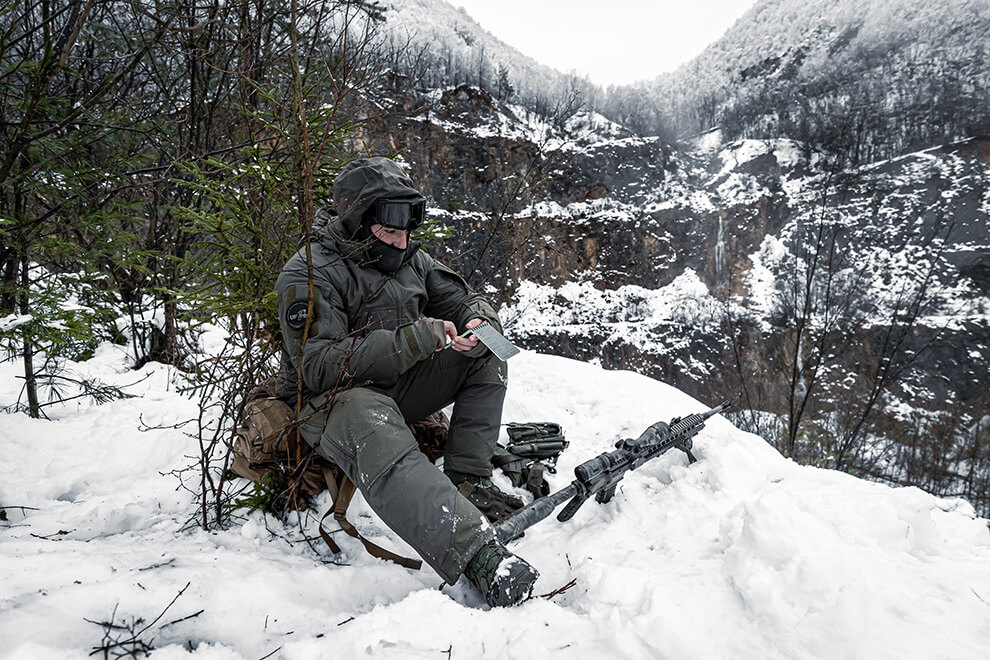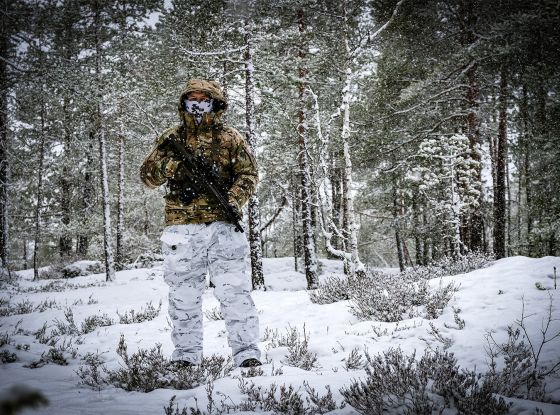Tactical operations demand much of those who conduct them—and of the clothing they wear while engaged in those operations. Accordingly, operators need tactical garments that perform supremely well. One of the best-performing textiles to satisfy that need is Merino wool, a resilient natural fabric that feels good against the skin and can withstand a great deal of punishment. Small wonder then that tactical operators prefer field garments that incorporate Merino wool.
In this blog post:
What is Merino Wool?
Merino wool comes from a breed of sheep that originated in Spain sometime after the 5th Century. By the 1700s, Merino sheep had flocked to far-flung European pastures and, later, to those in Australia and New Zealand.
It’s not entirely accurate to say that Merino wool took the world by storm in the 19th and 20th centuries, but neither is it entirely inaccurate to claim such because, eventually, Merino wool's reputation as a fine and soft yet durable fibre permitted it to become a staple in the manufacture of quality tactical gear.

Benefits and Applications
The type of garment in which Merino wool most often shows up is the tactical shirt. However, Merino wool tactical shirts are just the beginning. Merino wool is used in a variety of other tactical apparel types owing to its hallmark breathability, capacity to wick moisture, and prowess at keeping body odour at bay. The confluence of these benefits accounts for Merino wool’s revered status in the tactical-gear realm.
Natural Performance
Like traditional wool, the Merino variety is an effective shield against cold weather. But unlike the traditional sheep-derived material, Merino wool is an effective guard against overheating. The advantage of this naturally performing regulation of temperature where the fabric meets the wearer’s skin is it allows operators to continue their work uninterrupted by the need to change into different clothing when cold, cloudy weather turns warm and sunny.
Additionally, the moisture-wicking capacity of Merino Wool helps keep wearers dry during intense or stamina-demanding operations in which the adrenaline is flowing fast, free, and forcefully. Staying dry promotes comfort, yes, but it also enhances overall operator performance.
Resilience and Durability
As already mentioned, Merino Wool is resilient. On tactical missions, that resiliency is of paramount importance. Key to the resilience of Merino Wool is its fibres. They are remarkably robust. So much so that they reliably retain their shape over time despite the wear-and-tear of field operations. This makes Merino wool jackets, for example, a most suitable companion for tactical operators in the challenging landscapes they often must navigate.
More Comfort
A problem with traditional wool as a tactical-clothing material is its scratchiness. It seldom takes long for operators to start tugging at their traditional-wool garments to relieve the itches triggered by the fabric coming into contact with skin. By contrast, super-soft Merino wool does not present this problem. Consequently, tactical clothing made from Merino wool can be worn for lengthy periods without discomfort.
However, softness alone does not adequately account for Merino wool’s comfortableness. Also a factor is breathability—the fabric’s airiness helps prevent sweating. This is important because tactical operators who don’t become soaked in their own perspiration are operators better able to stay focused while they carry out their duties.

Care and Maintenance
By now it should be evident that Merino wool performs well in the field. But did you know it also performs well in the laundry room? Very true. However, it will only survive encounters with washing machines and dryers if care-and-maintenance instructions are followed to the letter.
Below are those instructions.
Washing
Hand Wash: To best preserve your Merino wool gear, wash it by hand in cold water with a mild detergent.
Machine Wash: You can also wash it in a machine, but that’s not recommended. Here, select cold water and set the machine to a gentle cycle. Use detergent made expressly for wool.
No Bleach: The reason to use mild detergent is that harsh detergent breaks down Merino wool’s fibres. The same thing happens when you use bleach. So, don’t.
Drying
Air Dry Only: Lay your freshly washed Merino wool clothing flat on a tabletop. Let it dry naturally but keep it out of direct sunlight (which will cause fading and fibre breakdown). Never put Merino wool garments in a dryer, not even at the lowest heat setting, because it’s virtually guaranteed to shrink the material.

UF PRO and Merino Wool
At UF PRO, we're dialled into the core needs of tactical operators. We know how important it is to have gear that holds up and keeps the fighter in the fight. That's why we've brought all-natural Merino wool into the mix. It elevates tactical apparel comfort and functionality to significantly higher levels than are achievable with traditional wool.
Take, for example, our Delta AcE Plus Gen.3 Tactical Jacket. We’ve lined its sleeves with a special blend of Merino wool known as 37.5™ to help quickly evaporate perspiration. Our reason for doing this stems from the knowledge that tactical operators soaked in their own sweat perform less efficiently and effectively than operators who feel dry fabric against their skin.
Conclusion
Merino wool is possibly nature’s most beneficial contribution to the world of performance-driven tactical clothing. Unlike traditional wool, the Merino variety is not scratchy, so it offers a surprising degree of comfort. It’s also a material that supports and enhances the functionality of the garments to which it is added.
With pioneers like UF PRO embracing highly beneficial Merino wool, optimised performance of tactical garments is no longer an aspiration. It is instead a reality.




